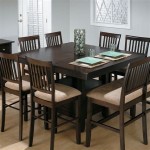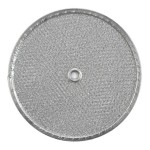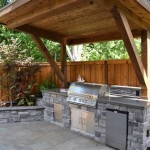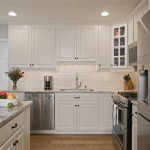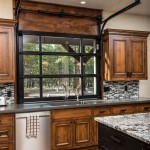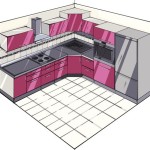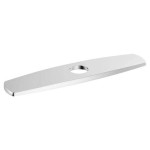LED Recessed Lights for Kitchens: A Comprehensive Guide
Kitchen lighting is a critical element of any home design, impacting both functionality and ambiance. Choosing the right lighting system can transform a kitchen from a purely utilitarian space to a welcoming and efficient environment. LED recessed lights have emerged as a popular and effective solution for kitchen lighting, owing to their energy efficiency, longevity, and versatile design options.
Recessed lighting, also known as can lighting, is installed directly into the ceiling, creating a sleek and unobtrusive look. LED technology offers significant advantages over traditional incandescent or halogen bulbs, making them an ideal choice for modern kitchens. This article will explore the key benefits of LED recessed lights, factors to consider when selecting them, and practical guidance on planning and installing a recessed lighting system in a kitchen.
Benefits of LED Recessed Lights in the Kitchen
The shift towards LED lighting in kitchens is driven by several compelling advantages. Understanding these benefits is crucial for making informed decisions about kitchen lighting upgrades.
Energy Efficiency: One of the most significant advantages of LED lights is their exceptional energy efficiency. Compared to traditional incandescent bulbs, LEDs consume up to 75% less energy to produce the same amount of light. This translates into substantial savings on electricity bills over the lifespan of the lights. In a kitchen, where lights are often used for extended periods, the energy savings can be particularly noticeable.
Longevity: LEDs have a significantly longer lifespan than traditional bulbs. While an incandescent bulb might last for 1,000 hours, an LED bulb can last for 25,000 to 50,000 hours or more. This extended lifespan reduces the frequency of bulb replacements, minimizing maintenance efforts and costs. In hard-to-reach areas like recessed fixtures, this longevity is a considerable advantage.
Durability: LEDs are solid-state devices that are more resistant to shocks, vibrations, and impacts compared to fragile glass bulbs. This durability makes them suitable for kitchens, where accidental bumps or vibrations are more likely to occur. They are also less sensitive to temperature fluctuations, ensuring consistent performance in various kitchen environments.
Lower Heat Emission: Traditional incandescent bulbs convert a significant portion of their energy into heat, contributing to higher room temperatures. LEDs, on the other hand, produce very little heat, making them a cooler and more comfortable lighting option for the kitchen, especially during cooking.
Instant-on Capability: Unlike some older types of lighting that require time to warm up, LEDs provide instant illumination when switched on. This instant-on capability is particularly useful in kitchens, where immediate and reliable lighting is often needed.
Dimming Capability: Many LED recessed lights are compatible with dimming switches, allowing homeowners to adjust the brightness levels according to their needs and preferences. This feature enables the creation of different moods and atmospheres in the kitchen, from bright task lighting to soft ambient lighting.
Environmentally Friendly: LEDs are free of harmful substances like mercury, which is found in some other types of lighting. They also contribute to a smaller carbon footprint due to their lower energy consumption and longer lifespan. Choosing LED lighting aligns with sustainable living practices.
Factors to Consider When Selecting LED Recessed Lights
Choosing the right LED recessed lights for a kitchen involves several considerations, including the light output, color temperature, size and type of fixture, and compatibility with existing wiring.
Light Output (Lumens): Lumens are a measure of the total amount of visible light emitted by a light source. The appropriate lumen output for a kitchen depends on the size of the space, the color of the walls and ceiling, and the intended use of the area. General ambient lighting typically requires lower lumen output than task lighting. A kitchen designer or lighting specialist can assist in determining the optimal lumen output for specific areas within the kitchen.
Color Temperature (Kelvin): Color temperature is measured in Kelvin (K) and describes the warmth or coolness of the light. Lower Kelvin values (e.g., 2700K-3000K) produce a warm, yellowish light that is suitable for creating a cozy and inviting atmosphere. Higher Kelvin values (e.g., 4000K-5000K) produce a cooler, whiter light that is ideal for task lighting and areas where visibility is crucial. For kitchens, a color temperature of 3000K-4000K is generally recommended to provide a balance between warmth and clarity.
Size and Type of Fixture: Recessed lights are available in various sizes, typically ranging from 3 inches to 6 inches in diameter. Smaller fixtures are often used for accent lighting or in areas with limited ceiling space, while larger fixtures provide broader illumination. The type of fixture also varies, with options including standard recessed cans, gimbal fixtures that can be angled to direct light, and adjustable trim options that allow for customization of the light output and beam angle.
Trim Style and Finish: The trim of a recessed light is the visible portion that surrounds the light source. Trims are available in a variety of styles and finishes, including white, black, brushed nickel, and bronze, to complement the kitchen's décor. The trim style can also affect the light distribution, with some trims providing a wider beam angle and others focusing the light more narrowly.
Dimmability: If dimming capability is desired, it is essential to choose LED recessed lights that are specifically designed to be dimmable and to use a compatible dimmer switch. Not all LED lights are dimmable, and using an incompatible dimmer switch can cause flickering or buzzing.
Wet Rating: In areas of the kitchen where moisture is present, such as above the sink or near the stovetop, it is important to choose recessed lights that are wet-rated. Wet-rated fixtures are designed to withstand moisture and prevent electrical hazards.
IC Rating: IC-rated recessed lights are designed to be installed in direct contact with insulation without posing a fire hazard. If the recessed lights will be installed in an insulated ceiling, it is crucial to choose IC-rated fixtures.
Energy Star Certification: Energy Star-certified LED recessed lights meet strict energy efficiency and performance standards. Choosing Energy Star-certified products can ensure that the lights will deliver reliable performance and energy savings.
Planning and Installing LED Recessed Lights in a Kitchen
Planning and installing an LED recessed lighting system in a kitchen requires careful consideration of the layout, electrical wiring, and ceiling structure. It is often advisable to consult with a qualified electrician or lighting designer to ensure that the installation is safe and meets all applicable building codes.
Layout Planning: The first step in planning a recessed lighting system is to determine the desired layout of the lights. This involves considering the size and shape of the kitchen, the location of cabinets and appliances, and the intended use of different areas. A common approach is to divide the kitchen into zones, such as the general ambient lighting zone, the task lighting zone above the countertops, and the accent lighting zone for highlighting specific features.
Spacing and Placement: The spacing between recessed lights depends on the lumen output of the lights and the desired level of illumination. A general guideline is to space the lights evenly throughout the ceiling, with a distance of 4 to 6 feet between each light. Task lighting should be placed directly above the work areas, such as the countertops and sink, to provide adequate illumination for food preparation and other tasks.
Wiring Considerations: Installing recessed lights typically involves running electrical wiring from a junction box to each fixture. It is important to ensure that the wiring is properly sized to handle the load of the lights and that all connections are made securely. If the existing wiring is not adequate, it may be necessary to upgrade the electrical panel or run new circuits.
Ceiling Preparation: Installing recessed lights requires cutting holes in the ceiling to accommodate the fixtures. The size of the hole will depend on the size of the recessed can. It is important to carefully measure and mark the locations of the holes before cutting them. If the ceiling contains asbestos or other hazardous materials, it is essential to take appropriate precautions.
Fixture Installation: Once the holes have been cut and the wiring has been run, the recessed fixtures can be installed. This typically involves connecting the wires to the fixture and securing the fixture to the ceiling using mounting brackets or clips. It is important to follow the manufacturer's instructions carefully.
Dimmer Switch Installation: If dimming capability is desired, a compatible dimmer switch should be installed in place of the standard light switch. It is important to choose a dimmer switch that is specifically designed to work with LED lights. The dimmer switch should be wired according to the manufacturer's instructions.
Testing and Adjustment: After the recessed lights have been installed, it is important to test them to ensure that they are working properly. This involves turning the lights on and off, dimming them, and checking for any flickering or buzzing. If any problems are detected, they should be addressed immediately. The aim of this stage, is to adjust the placement of lights to ensure optimal lighting conditions.
Professional Installation: While it is possible to install LED recessed lights as a DIY project, it is often advisable to hire a qualified electrician or lighting designer to perform the installation. A professional installer can ensure that the installation is safe, meets all applicable building codes, and provides optimal lighting performance. Working with electricity is inherently dangerous, and improper installation can lead to electrical shocks, fires, or other hazards.

The Difference Between Can Lights Vs Recessed And How To Make A Choice For Your Home Angi

Kitchen Recessed Lighting Layout And Planning Ideas Advice Lamps Plus

Recessed Lighting Buying Guide The Home

The 6 Best Led Recessed Lights Mr Potlight

Reviews For Commercial Electric 4 In White Low Glare Integrated Led Recessed Light Trim 625 Lumens 3000k Soft Kitchen Bedroom Office Pg 1 The Home

The Best Led Recessed Lighting 2024 Dunbar S Electric

40 Recessed Lighting Designs Ideas For Every Room

Choosing The Best Led Recessed Lighting What You Should Know Prolighting

Mastering The Art Of Recessed Lighting Multi

Recessed Lighting At Lowes Com

